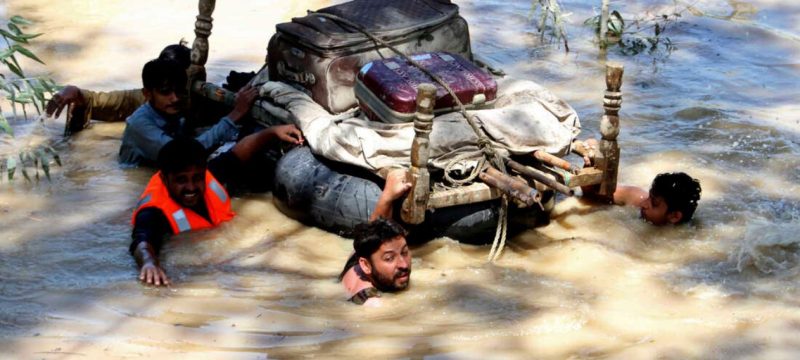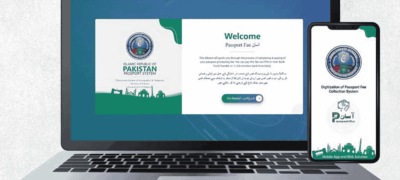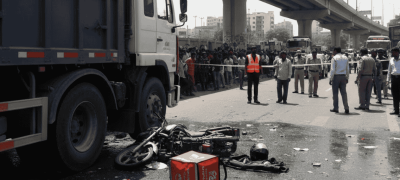Pakistan is facing an unprecedented natural disaster as the country grapples with the aftermath of severe monsoon rains. As of recent reports, Pakistan’s death toll from monsoon devastation tops 250, with many more affected by the floods and landslides caused by the relentless downpour. Authorities continue to assess the situation, and humanitarian aid is urgently being mobilized to support the affected communities.
Monsoon Rains Lead to Widespread Damage
The monsoon rains, which started in mid-June, have resulted in widespread destruction across various provinces of Pakistan. The heaviest rainfall has been recorded in the southern and central regions, where rivers have overflowed, causing massive flooding. Roads, homes, and vital infrastructure have been damaged or completely destroyed. Thousands of people are stranded in their homes, with some unable to access essential supplies due to damaged roads and bridges.
Read More : Monsoon Devastation Continues as Death Toll Reaches 242: A Growing Crisis
According to local authorities, the hardest-hit areas include Sindh, Balochistan, and parts of Punjab, where the floods have inundated villages and towns. In addition to the loss of life, the floods have also disrupted livelihoods, especially in rural areas where agriculture is the main source of income.
Loss of Life and Humanitarian Crisis
As Pakistan’s death toll from monsoon devastation tops 250, the country faces an escalating humanitarian crisis. The victims include men, women, and children, with many casualties attributed to drowning, landslides, and collapsed buildings. Rescue operations continue, but the scope of the destruction has made it difficult for authorities to reach all affected areas promptly.
Officials are calling for immediate international assistance, as the country struggles to provide food, water, and medical supplies to the displaced population. Many families have been forced to take shelter in temporary camps, which lack basic amenities. Health concerns are also rising, with the increased risk of waterborne diseases such as cholera and dysentery due to contaminated water sources.
Government and Relief Efforts
The government of Pakistan has declared a state of emergency in the most affected regions and has mobilized the military for rescue and relief efforts. The National Disaster Management Authority (NDMA) is coordinating with local governments and NGOs to provide aid to the victims. Emergency teams are delivering food, water, and medical supplies to the worst-hit areas.
The government has also called on international aid organizations for support, with countries and organizations such as the United Nations and Red Cross offering assistance. Relief teams have been dispatched to help evacuate residents from flood-prone areas and to establish temporary shelters for those displaced by the disaster.
Damage to Infrastructure
Apart from the loss of life, Pakistan’s infrastructure has also borne the brunt of the monsoon season. Roads, bridges, and power lines have been destroyed, making it difficult for authorities to assess the full extent of the damage in remote areas. Several districts have reported power outages, which has worsened the situation for residents who are already struggling with the flood’s aftermath.
In rural areas, the destruction of crops has compounded the economic damage. The flooding has washed away agricultural lands, affecting farmers’ livelihoods. The country’s agriculture sector, which is a major contributor to Pakistan’s economy, is likely to face long-term consequences.
Ongoing Challenges and Future Outlook
With more rain expected in the coming weeks, the situation in Pakistan remains precarious. The death toll could rise further if the rains continue and floodwaters do not recede. Relief efforts are being hampered by the ongoing monsoon season, as access to some affected areas remains challenging.
In the coming months, Pakistan will need to focus on rebuilding infrastructure and providing long-term support to those who have lost their homes and livelihoods. The government will need to prioritize disaster preparedness and response to mitigate the impact of future natural disasters.
Pakistan’s death toll from monsoon devastation has now topped 250, with many more people affected by the floods and landslides. The severe weather has left a trail of widespread destruction, making the situation even more dire. As the death toll rises, the country is grappling with a serious humanitarian crisis, struggling to provide relief and support to those impacted.
The monsoon floods have not only taken lives but also left many communities displaced. The death toll is expected to increase as rescue teams continue to access hard-hit areas. Pakistan urgently needs international assistance to manage the crisis. Relief operations are underway, but the damage is extensive, and the recovery process will require significant resources and global cooperation.
As the death toll continues to climb, Pakistan faces a long road to recovery. The nation needs continued support to rebuild infrastructure, assist displaced families, and restore essential services. The global community’s involvement will be crucial in helping Pakistan navigate this unprecedented disaster.









